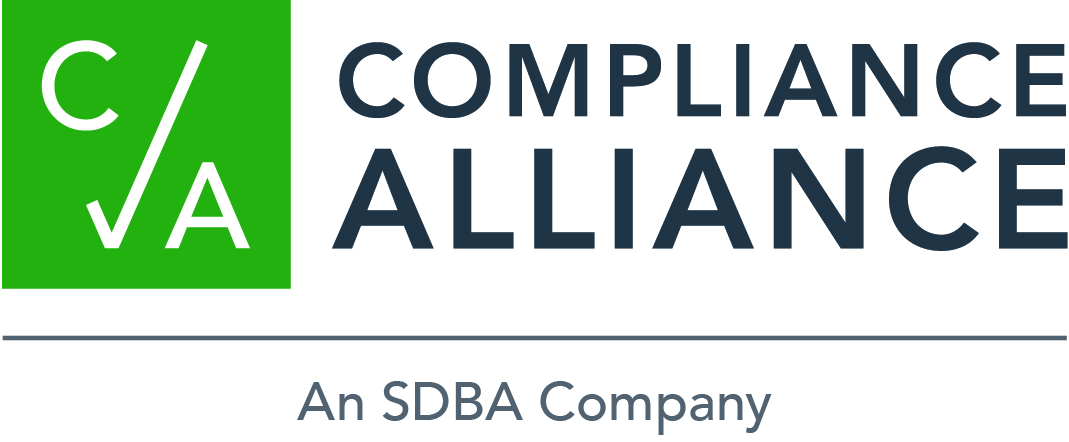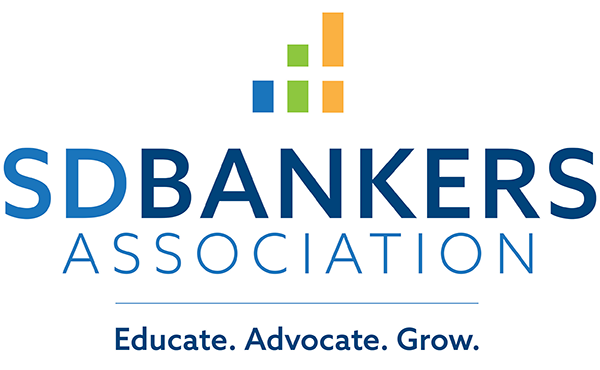|

FDIC's McWilliams Outlines Regulatory Goals in Magazine Profile
The forthcoming January/February 2019 issue of the ABA Banking Journal features a profile of FDIC Chairman Jelena McWilliams in which she discusses her personal background, professional career and priorities at the agency.
Arriving in America from the former Yugoslavia as an 18-year-old exchange student with just $500 to her name, McWilliams opened a bank account on her second day in the United States. She worked her way through college and law school. After working as a regulatory attorney, Capitol Hill staffer and regional bank general counsel, she was confirmed earlier this year as FDIC chairman.
In the interview, McWilliams emphasizes her commitments to accountability and transparency, her goal of recalibrating regulations to promote economic growth and her focus on promoting de novo banks and technological innovation. She also outlines reforms she is pursuing at the FDIC.
As part of her efforts to bring greater transparency to the FDIC, McWilliams is “looking to strengthen the ombudsman and bank appeals process at the FDIC." Bankers have long expressed concern about the lack of independent exam review procedures.
“Banks need to have a good channel of communication when there are disputes and they’re in disagreement with their regulators, and that’s one of the issues we’re going to be looking at,” McWilliams said. Asked about whether these reforms might include an independent appeals channel outside of the agency reporting structure, as bipartisan ABA-backed legislation has called for, she added that “everything is on the table” and that the agency will seek public feedback on any changes. Read the profile.
FinCEN to Launch Innovation Initiative
The Financial Crimes Enforcement Network will launch a new innovation initiative to foster a better understanding of the opportunities and challenges of new technologies for enhancing Bank Secrecy Act and anti-money laundering efforts, FinCEN Director Ken Blanco told attendees at ABA’s Financial Crimes Enforcement Conference on Tuesday.
This effort--announced a day after the financial regulatory agencies issued a joint statement encouraging banks to pursue innovative solutions that can enhance their BSA/AML programs--will involve engagement with banks, tech providers and other stakeholders to discuss the implications of new products or services and discuss future applications or next steps, Blanco said.
Blanco also discussed the agency’s efforts for updating the BSA/AML framework, noting that “we are committed to updating the regulations as necessary to ensure that the BSA regime is as effective and efficient as possible.” In the days ahead, FinCEN will work to clarify the risk-based approach to the examination process; clarify that “there is no zero-tolerance approach to BSA enforcement”; incentivize financial institutions to devote resources to priority illicit finance threats; and develop concrete ways to highlight the value of BSA data across stakeholders, he added.
Read the statement.
Postal Reform Task Force Frowns on Postal Banking
The U.S. Postal Service should not move into “postal banking” with new financial services offerings, according to a report issued Tuesday by a Treasury Department task force focused on postal reform. The task force was established by President Trump in April 2018.
“Given the USPS’s narrow expertise and capital limitations, expanding into sectors where the USPS does not have a comparative advantage or where balance sheet risk might arise, such as postal banking, should not be pursued,” the task force said. The report instead highlighted areas where USPS could grow revenue without taking on balance sheet risk, such as processing hunting and fishing licenses or renting space to complementary retail establishments.
ABA has long opposed granting banking powers to USPS, noting that it might be perceived as a government-endorsed provider competing with taxpaying banks and that it would create risks that USPS is ill-suited to manage. As a representative of banks that use USPS, ABA also supports much-needed reforms to the Postal Service, which the report said is forecast to lose tens of billions of dollars over the next decade. Read the report.
Dante Bank Listed on National Register of Historic Places
 The Security State Bank in Dante was added to the National Register of Historic Places on Nov. 1, according to the South Dakota State Historical Society. The Security State Bank in Dante was added to the National Register of Historic Places on Nov. 1, according to the South Dakota State Historical Society.
The Security State Bank is a two-story, rectangular masonry brick commercial building. It was built in 1920 at 320 Main St., which is the southwest corner of Main Street and Haskell Avenue. The bank is the best remaining local example of early 20th century commercial history and architecture in Dante and is the only bank in Dante’s history.
The building is listed in the National Register for its significance to the history of banking and commerce in early Dante to serve the agriculture-dependent community and represents the economic difficulties that plagued South Dakota in the 1920s. Banking in South Dakota was critical in its early years for the prominent industries of real estate and agriculture, but the state also had a high bank failure rate after World War I due to the collapse of ag prices and risky banking investments.
The building is also listed as the best local example of an early 20th century two-part commercial block, as well as demonstrating shifts in commercial bank architecture with its blend of craftsman and neoclassical styles. The exterior of the building has retained original features such as the basket-weave and stretcher bond brick patterns, limestone window sills, square decorative features and its tall brick parapet.
Read the full story in the December SDBanker Magazine.
ABA: CU Appraisal Proposal Would Create Inconsistent Regulatory Standard
A recent proposal by the National Credit Union Administration to raise the threshold at which credit unions must obtain appraisals for commercial real estate transactions from $250,000 to $1 million would create an unlevel playing field between banks and credit unions, ABA said in a comment letter to the NCUA on Tuesday. The letter was also shared with members of the Federal Financial Institutions Examination Council. ABA noted that the proposal would “[put] NCUA’s regulatory treatment of credit unions dramatically out-of-step with its sister agencies,” which earlier this year raised the CRE appraisal threshold for banks from $250,000 to $500,000.
“Two different standards for commercial real estate lending appraisal thresholds or any other real estate lending thresholds, made by what are functionally equivalent lending institutions, would negatively impact prudent risk management practices and undermine local markets,” ABA said. It added that “FFIEC and all participating agencies should uniformly agree to abide by consistent standards, rulemaking and thresholds that are now in jeopardy as a result of this proposal.” Read the letter. For more information, contact ABA's Sharon Whitaker or For more information, contact ABA's Brittany Kleinpaste.
ABA Issues Staff Analysis on Reg CC Proposal
ABA has issued a staff analysis summarizing recently proposed changes to Reg CC. The proposal--which was issued last month by the Federal Reserve and the Consumer Financial Protection Bureau--reopened the public comment period on the Fed’s 2011 proposal regarding funds availability under Regulation CC. The agencies simultaneously proposed a method for calculating the dollar amount adjustments required every five years under the Electronic Funds Availability Act and implemented a provision of S. 2155.
While the Fed has finalized regulations touching on parts of the proposal subject to its sole rulemaking authority, the 2011 proposal regarding funds availability under Reg CC, Subpart B, is now under joint authority of both the Fed and the CFPB. In light of their joint authority, and “important changes in markets, technology, or industry practice since the public submitted comments seven years ago,” the agencies sought additional public comment on the original 2011 proposal.
In addition to reopening comments, the proposal would set the calculation method every five years with the annual aggregate percentage increase in the CPI-W index, rounded to the nearest multiple of $25, along with dates for the adjustments. (For example, the minimum funds available for withdrawal under the proposal would be $225, not $200.) It also amended Reg CC to cover to American Samoa, the Northern Mariana Islands and Guam, as already enacted under the S. 2155 regulatory reform law. Read the staff analysis. For more information, contact ABA's Nessa Feddis.
Marriott Reveals Breach Affecting Up to 500 Million Guests
Marriott last Friday revealed a massive breach of personal information--possibly including payment card data--for up to 500 million guests who made reservations at hotels in the Starwood chain, which Marriott acquired in 2016. Marriott said that it discovered on Sept. 8, 2018, that the Starwood reservation database had been breached by hackers since 2014. For 327 million guests, the compromised information included names, addresses, phone numbers, email addresses, passport numbers, hotel loyalty numbers and dates of birth.
Marriott said for some of these guests, encrypted payment card data was accessed as well. “There are two components needed to decrypt the payment card numbers, and at this point, Marriott has not been able to rule out the possibility that both were taken,” the company said. Marriott said that it began notifying affected guests on Friday.
Starwood brands affected by the breach include Aloft, Element, Design Hotels, Four Points, Le Meridien, Luxury Collection, St. Regis, Sheraton, Tribute Portfolio, W Hotels, Westin and Starwood-branded timeshares. As of 2014, there were more than 1,200 Starwood hotel properties, which would make this one of the largest hotel company data breaches in recent years. Read more. View FAQs and information from Marriott.
Podcast: Compliance, Operational Challenges to Telework in a Bank
With the increasing growth of video-conferencing and cloud computing technology, telework has become ever more feasible--and many companies are welcoming it, whether to retain workers who want more flexibility, reduce physical space costs or be more resilient in times of disaster. At the same time, other companies are recalling telecommuters in a bid to build team cohesion and track productivity better.
In this episode, employment law attorney Steve Greene and ABA senior counsel Jonathan Thessin discuss operational and compliance considerations that banks may want to consider before offering or expanding telework options. Greene and Thessin discuss using policies to prevent favoritism, preparing telework agreements for remote workers, handling the data security challenges telework poses to businesses like banks, managing employee overtime and avoiding “hiccups in execution.”
Greene and Thessin also talk about how telework can help make banks more attractive to rising generations that report seeking more flexibility in the workplace--and how it might also assist small banks in rural markets attract professionals with specialized skills. Listen to this episode.

Question of the Week
Question: I have a loan officer who issued a loan estimate that predates the application date by one day. While I don’t believe this to be best practice, I’m not certain whether it’s also a violation of regulation. Can someone please confirm?
Answer: Assuming the required six pieces of information had not been received, then at least conservatively, yes, this could be considered a violation. The timeline to provide an LE starts running from the time the application is received, which is based on when the bank received the sixth piece of required information. So an LE issued before the application wouldn't have followed the rules of being provided within three days after the application, and likely would not have included all of the required information.
(iii) Timing.
(A) The creditor shall deliver or place in the mail the disclosures required under paragraph (e)(1)(i) of this section not later than the third business day after the creditor receives the consumer's application, as defined in § 1026.2(a)(3).
1026.19(e)(1)(iii)(A), https://www.consumerfinance.gov/policy-compliance/rulemaking/regulations/1026/19/#e-1-iii
Not a member? Learn more about membership with Compliance Alliance by attending one of our live demos:
Compliance rules and regulations change quickly. For timely compliance updates, subscribe to Compliance Alliance’s email newsletters.
Compliance Alliance offers a comprehensive suite of compliance management solutions. To learn how to put them to work for your bank, call 888.353.3933 or email.
SDBA eNews Archive
View past issues of the SDBA enews
Advertising Opportunity
Learn more about sponsoring the SDBA eNews.
Questions/Comments
Contact Alisa Bousa, SDBA, at 800.726.7322 or via email.
|


 The Security State Bank in Dante was added to the National Register of Historic Places on Nov. 1, according to the South Dakota State Historical Society.
The Security State Bank in Dante was added to the National Register of Historic Places on Nov. 1, according to the South Dakota State Historical Society.